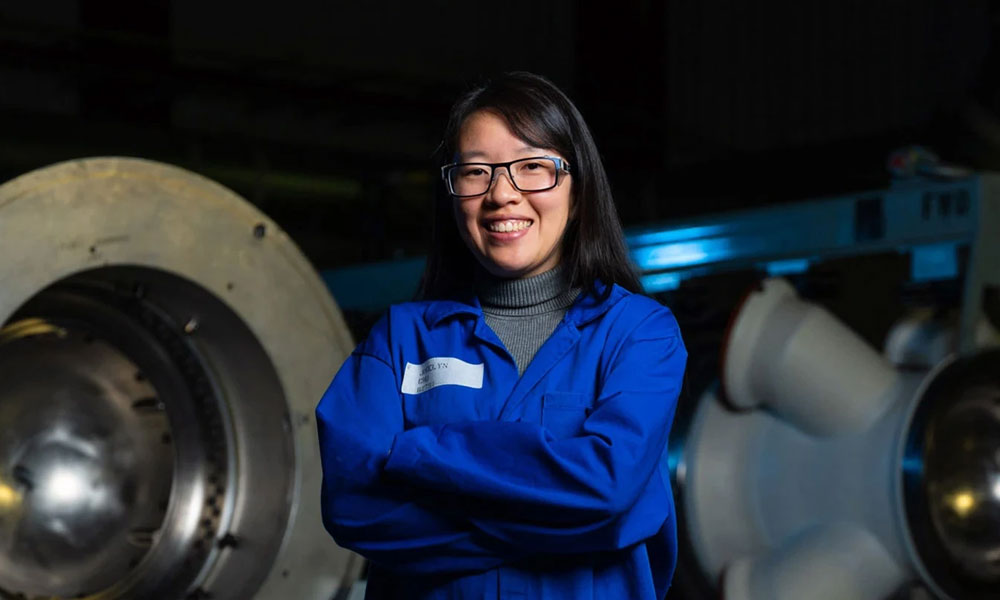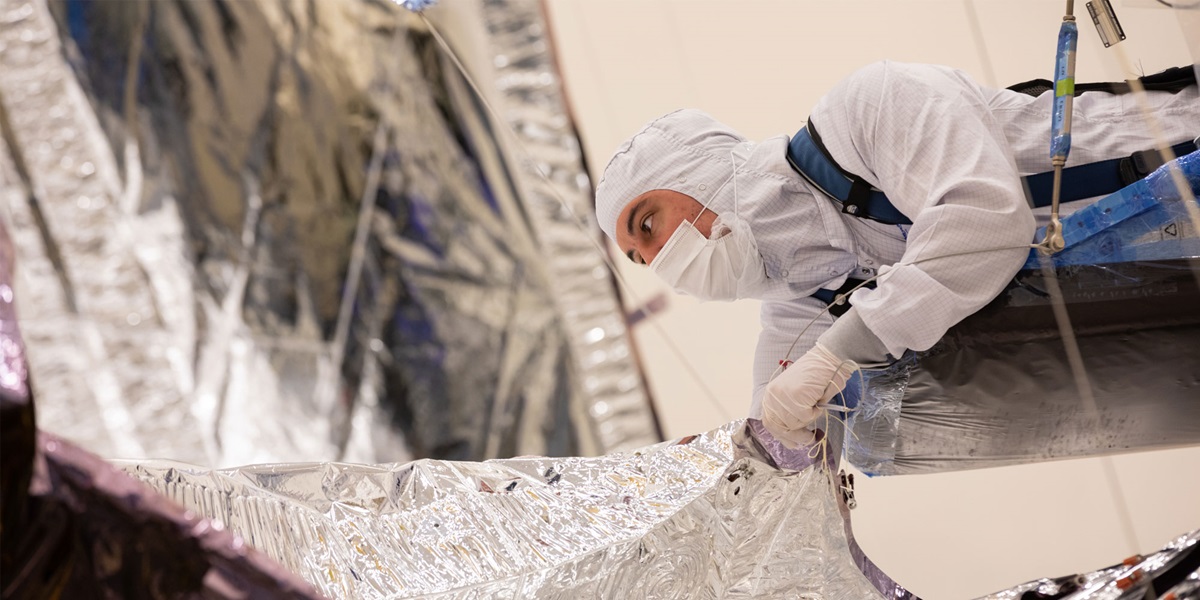Jerome Luine is on a mission of the quantumphysical kind, and he’s collecting elementary particles theorized by one of the most famous scientists of our time, Albert Einstein. As the principal scientist and group lead for Quantum Sensing and Metrology Basic Research at Northrop Grumman’s NG Next lab, Luine works with a revolutionary piece of equipment called a transition edge sensor, or TES. This particular TES counts photons — however, unlike other photon counters across the world, this one doesn’t “go blind” or shut down after the first particle arrives. It can count multiple photons coming in at the same time.
“We want to directly measure whether one, two, four or 10 photons arrive,” said Luine, a 36-year veteran of Northrop Grumman. “There are other ways of determining that number, but this is the most straightforward method.”
To verify the number of photons coming into the TES, a tiny piece of tungsten measuring 20 microns by 20 microns by 20 nanometers — that’s as small as the thinnest human hair — is carefully suspended within the super-cooled device. The TES operates at just .05 degree above absolute zero. “It’s a thermometer in reality,” Luine said.
When a single photon hits the tungsten, the tungsten’s temperature goes up only slightly. When two photons hit the chemical element, its temperature rises proportionally. If four photons enter the tungsten, its temperature rises even more, and so on. In this way, researchers can determine the number of photons that arrive.
Now, creating elementary particles like photons for use in the lab is no small feat. Ideally, Luine would have access to technology that enabled him to push a button and release one photon. To that end, Luine and company are collaborating with Professor Stephen Cronin at USC, who’s working on just that: a singlephoton emitter. Using carbon nanotube technology, Cronin has a process whereby he applies ozone to the nanotube and zaps it with laser light so that it emits a photon or photons of light, according to Luine. One day, Luine’s team hopes to harness such technology and emit single photons by using an electrical impulse as the catalyst. Luine adds, “With single-photon emitters, we’ll be able to construct ‘designer’ quantum states of light, literally photon-by-photon, for beyond state-of-the-art sensing and measurement.” How does this quantum technology apply to a company like Northrop Grumman that specializes in aircraft and spacecraft? In the real world, measurement is important, and precise measurement is crucial, Luine said.
That is where Quantum Sensing and Metrology Basic Research can make a huge difference.
“You may be able to determine your position on the Earth in the absence of GPS if you had very precise measurements of Earth’s magnetic field, and this technology makes it possible,” he said. “It turns out this is just the tip of the iceberg. There are many other aspects of quantum mechanics we can apply to real-world problems.”
Luine’s colleague Dale Durand, a senior scientist working on the project, knows he is on a journey that could position Northrop Grumman for success now and in the future. “It is difficult for me to imagine more interesting work than being part of Jerome’s research team. For one example, light examined on a photon-by-photon basis has very peculiar properties, some of which offer the potential to change the rules of the game in sensing,” Durand said. “Are there conditions and concepts of operation that take us into a future with a different set of rules? This question is fascinating in its own right, but it is also potentially very important to our company.”
During nearly four decades in aerospace, Luine has seen a lot of amazing applications. Solving puzzles at the quantum level, however, has altered his perspective completely. “I’ve worked on a lot of cool stuff, but this is definitely the best.”

Life at Northrop Grumman: Recent Stories
Shape your career journey with diverse roles and experiences that expand your expertise, feed your curiosity, and fuel your passion.

Life at Northrop Grumman: Archived Stories
It takes every one of us to make the impossible a reality. See what life is like at Northrop Grumman.